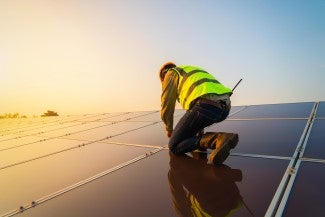Solar Lease Vs. Solar PPA
Think of the first time you heard the term “lease.” Maybe it was in connection with a car, or perhaps you associate lease payments with apartments. What that meant was that you pay a set amount every month, and for that amount you get access to the product, property, or service you need.
Since you don’t own the vehicle or place to live, items like maintenance are usually the responsibility of the owner, whether that’s a landlord or car company. It also saves money upfront since you are not obligated to pay the entire cost of the vehicle or home when you receive the keys.
Solar leasing works in a similar fashion. You pay one set price per month and get solar panels installed on your roof, which can allow you to save between 10% and 30% on your monthly electrical bills. Maintaining the system is the responsibility of the company from whom you’ve leased the panels.
One of the advantages of leasing solar panels is that you can often get a system installed with little or no money down, saving you the upfront investment costs. Leases for solar panels typically last between 20 and 25 years, which reflects the typical lifespan of a system. In general, solar leases cost between $50 and $250 a month.
In contrast, under a solar PPA arrangement, you pay for the actual amount of electricity you use at a set price per kilowatt-hour (kWh). Most consumers are familiar with this model because it is the one typically used by current monopoly utilities.
Choosing between a PPA and a solar lease is really a matter of how you prefer to pay your electricity bills. If you average out variable payments under a PPA, they should roughly mirror the set amount you would pay under a solar lease. If you prefer to be able to budget the same amount each month for your electricity payments, a lease may be right for you. Operating under a PPA arrangement, however, may reflect how much electricity you use more precisely. No matter which payment option you consider, the savings over what you’re paying to your current utility will be about the same—and you get to control your own electricity production instead of leaving that to a corporation whose loyalty lies with their shareholders, not their end users.


